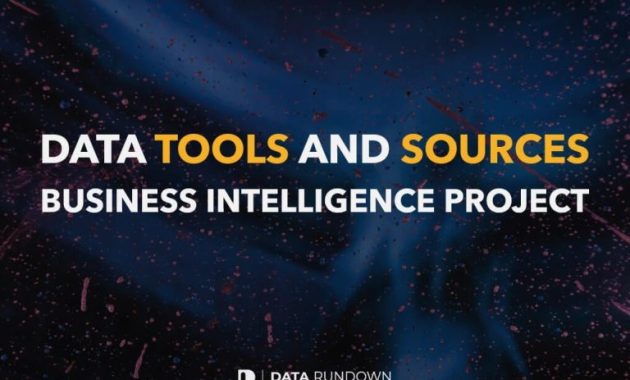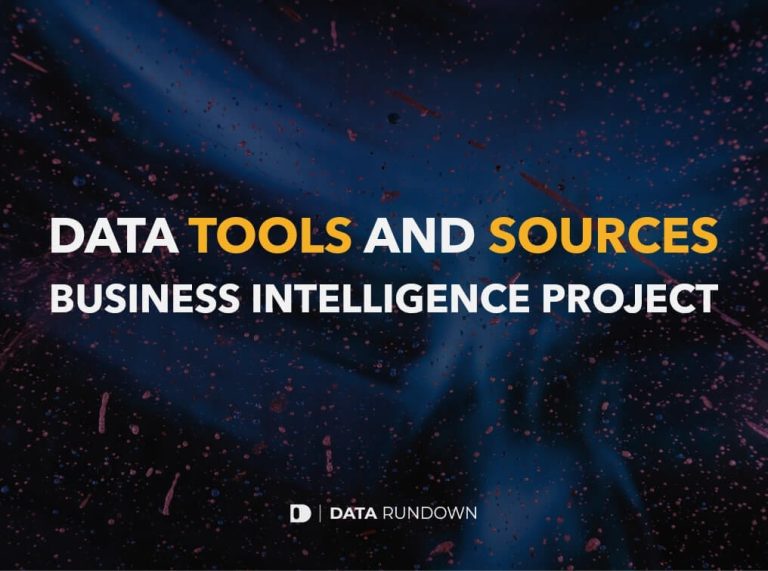
Winning with 3 Business Intelligence Tools To Boost Decision Making
In today’s data-driven world, making informed decisions is no longer a luxury; it’s a necessity. Businesses that leverage data effectively gain a significant competitive advantage. They can anticipate market trends, optimize operations, and ultimately, achieve sustainable growth. This article explores how to win with three powerful business intelligence (BI) tools, empowering you to boost decision-making across your organization.
The core of successful business intelligence lies in transforming raw data into actionable insights. This process involves collecting, processing, analyzing, and visualizing data. The right BI tools can automate these tasks, saving time and resources. They also improve the accuracy and accessibility of information. The result is a more informed and agile organization. The following tools represent a strong starting point for any business seeking to unlock the power of its data.
Understanding the Value of Business Intelligence
Before diving into specific tools, it’s crucial to understand the fundamental value of business intelligence. BI is more than just data analysis; it’s about creating a data-driven culture. A culture where decisions are based on evidence, not gut feelings. This shift can lead to dramatic improvements in several key areas:
- Improved Decision-Making: BI tools provide clear, concise, and accurate information. This allows decision-makers to make better choices, faster.
- Increased Efficiency: Automation and streamlined workflows reduce manual tasks and improve operational efficiency.
- Enhanced Customer Understanding: Data analysis reveals customer behavior and preferences. This enables businesses to tailor products and services to meet customer needs.
- Competitive Advantage: Businesses that understand their data can identify opportunities and threats more effectively. This allows them to stay ahead of the competition.
- Cost Reduction: Optimizing processes and identifying inefficiencies can lead to significant cost savings.
Implementing a BI strategy requires careful planning and execution. It involves selecting the right tools, integrating them with existing systems, and training employees. It’s a journey, not a destination. The benefits, however, are well worth the effort.
Tool 1: Power BI – Microsoft’s Data Visualization Powerhouse
Microsoft Power BI is a leading business intelligence tool. It’s known for its user-friendly interface and powerful data visualization capabilities. Power BI allows users to connect to a wide variety of data sources. These include databases, cloud services, and spreadsheets. Users can then create interactive dashboards and reports. These reports can be shared across the organization.
Key Features of Power BI:
- Data Connectivity: Connects to numerous data sources, including Excel, SQL Server, and cloud services.
- Data Transformation: Cleans, transforms, and models data using Power Query.
- Data Visualization: Offers a wide range of charts, graphs, and maps for effective data representation.
- Interactive Dashboards: Creates dynamic dashboards that allow users to explore data and gain insights.
- Collaboration: Enables users to share reports and dashboards with colleagues.
- Mobile Access: Provides access to reports and dashboards on mobile devices.
Power BI is an excellent choice for businesses of all sizes. It is particularly well-suited for those already using Microsoft products. Its intuitive interface and extensive features make it easy to get started. It’s also a cost-effective solution compared to some other BI tools.
Tool 2: Tableau – The Industry Standard for Data Discovery
Tableau is another leading business intelligence tool, known for its intuitive drag-and-drop interface and powerful analytical capabilities. Tableau excels at data discovery and exploration. It allows users to quickly visualize data and identify trends. It is a favorite among data analysts and business users alike.
Key Features of Tableau:
- Intuitive Interface: Easy-to-use drag-and-drop interface for creating visualizations.
- Data Exploration: Powerful analytical capabilities for exploring data and identifying insights.
- Data Visualization: Offers a wide array of chart types and customization options.
- Data Blending: Combines data from multiple sources for comprehensive analysis.
- Collaboration: Enables users to share dashboards and collaborate on data analysis.
- Mobile Access: Provides access to dashboards on mobile devices.
Tableau is ideal for businesses that need to quickly explore and understand their data. It is particularly well-suited for data-driven decision-making. Its robust features and intuitive interface make it a top choice for many organizations. It’s a tool that empowers users to become data storytellers.
Tool 3: Qlik Sense – Associative Data Exploration
Qlik Sense is a business intelligence tool that takes a unique approach to data analysis. It uses an associative engine that allows users to explore data in a more intuitive way. Unlike traditional BI tools that rely on predefined queries, Qlik Sense lets users explore data freely. It reveals hidden relationships and insights.
Key Features of Qlik Sense:
- Associative Engine: Explores data freely, revealing hidden relationships.
- Data Visualization: Offers a wide range of interactive visualizations.
- Data Preparation: Simplifies data preparation and transformation.
- Collaboration: Enables users to share insights and collaborate on data analysis.
- Mobile Access: Provides access to dashboards on mobile devices.
- Advanced Analytics: Integrates with advanced analytics tools for deeper insights.
Qlik Sense is an excellent choice for businesses that want a more intuitive and flexible approach to data analysis. Its associative engine allows users to uncover insights that might be missed with other tools. It is particularly well-suited for businesses that need to explore complex datasets.
Choosing the Right BI Tool: A Comparative Analysis
Selecting the right business intelligence tool depends on your specific needs and requirements. Each of the three tools discussed—Power BI, Tableau, and Qlik Sense—offers unique strengths. Consider the following factors when making your decision:
- Ease of Use: Consider the learning curve and user-friendliness of the tool. Power BI is often considered the easiest to learn. Tableau and Qlik Sense have steeper learning curves.
- Data Visualization Capabilities: Evaluate the range of chart types and customization options available. Tableau and Power BI are known for their excellent data visualization.
- Data Connectivity: Ensure the tool can connect to your existing data sources. All three tools offer robust data connectivity.
- Data Transformation Capabilities: Consider the tool’s ability to clean, transform, and model data. Power BI and Tableau offer strong data transformation features.
- Collaboration Features: Evaluate the tool’s ability to share reports and dashboards with colleagues. All three tools offer collaboration features.
- Cost: Consider the pricing and licensing options. Power BI is often the most cost-effective option. Tableau and Qlik Sense can be more expensive.
Ultimately, the best way to choose the right BI tool is to try them out. Many vendors offer free trials or demos. This allows you to evaluate the tool’s features and determine if it meets your needs.
Implementing a BI Strategy for Maximum Impact
Choosing the right BI tool is only the first step. Implementing a successful BI strategy requires a holistic approach. Consider the following best practices:
- Define Clear Goals: Identify the specific business problems you want to solve with BI.
- Involve Stakeholders: Get input from key stakeholders across the organization.
- Choose the Right Data: Select the data sources that are most relevant to your goals.
- Clean and Prepare Your Data: Ensure your data is accurate and consistent.
- Train Your Employees: Provide training to employees on how to use the BI tool.
- Monitor and Evaluate: Track your progress and make adjustments as needed.
By following these best practices, you can maximize the impact of your BI initiatives. You can also create a data-driven culture that empowers your organization to make better decisions. This leads to improved performance and sustainable growth.
The Future of Business Intelligence
The field of business intelligence is constantly evolving. New technologies and trends are emerging. These include artificial intelligence (AI), machine learning (ML), and the Internet of Things (IoT). These technologies are transforming how businesses collect, analyze, and use data. They are also creating new opportunities for data-driven decision-making. Businesses that embrace these trends will be well-positioned to succeed in the future.
Key Trends in Business Intelligence:
- AI and ML Integration: AI and ML are being used to automate data analysis and generate insights.
- Self-Service BI: Empowering business users to analyze data without relying on IT.
- Cloud-Based BI: Moving BI solutions to the cloud for greater flexibility and scalability.
- Data Democratization: Making data accessible to everyone in the organization.
- Real-Time Analytics: Analyzing data in real-time to gain immediate insights.
Staying informed about these trends is crucial for businesses. It allows them to adapt and stay ahead of the competition. The future of business intelligence is bright. Businesses that embrace these trends will be well-positioned for success.
Conclusion: Empowering Decisions with the Right Tools
Winning with business intelligence tools requires more than just selecting the right software. It requires a commitment to data-driven decision-making. By understanding the value of BI, choosing the right tools, and implementing a robust strategy, businesses can unlock the power of their data. They can also improve decision-making, increase efficiency, and gain a competitive advantage. Power BI, Tableau, and Qlik Sense represent powerful options. They can help you achieve these goals. Embrace the power of data. Start your journey toward a more informed and successful future today. The journey to data-driven decision-making is an ongoing one. The rewards are well worth the effort. It’s time to start winning with business intelligence.
[See also: Related Article Titles]

